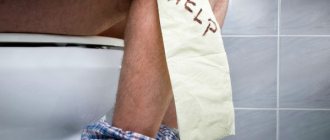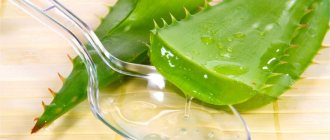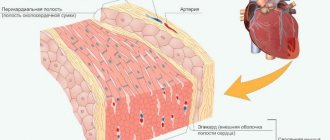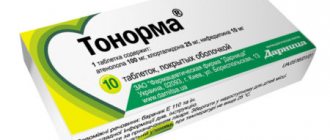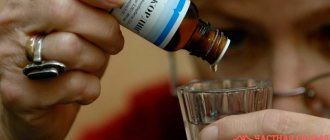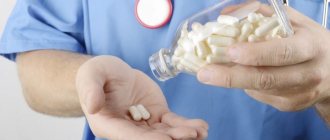Suitable and most effective medications are selected by the attending physician. The proctologist will prescribe the necessary laboratory diagnostic examination, determine the stage of the disease and calculate an individual treatment algorithm. Self-medication can become a source of a sharp deterioration in health, the transition of acute pathology to a chronic course.
The most effective drugs for hemorrhoids.
Monday, November 29
1584
5
1
Content
- Symptoms of hemorrhoids
- How to choose a drug for hemorrhoids
- Top 7 best pills for hemorrhoids
- Troxerutin
- Vikasol
- Phlebodia 600
- Ginkor Fort
- Detralex
- Diosmin
- Pylex
Hemorrhoids are a very common disease that mainly affects middle-aged people. Hemorrhoids are inflammation, trauma and dilation of the veins surrounding the rectum. With this problem, a person feels itching in the anus, later pain, bleeding and prolapse of hemorrhoids. Hemorrhoids significantly reduce well-being and quality of life in general. Fortunately, in the arsenal of modern medicine there are many drugs to treat this disease: suppositories, ointments, creams, tablets. Today we will talk about venotonics and anti-inflammatory drugs - effective pills for hemorrhoids.
Non-surgical treatment of acute and chronic hemorrhoids
G
Emorrhoids are one of the most common human diseases.
Although there are no exact statistics on this matter, there is every reason to believe that up to 80% of the adult population suffers from hemorrhoids
. Patients with this disease often seek help not only from coloproctologists, but also from specialists related to the treatment of diseases of the gastrointestinal tract, i.e. internists and gastroenterologists. The ability to correctly diagnose and choose adequate treatment tactics is the main task of a doctor.
Etiology
In the light of modern concepts, hemorrhoids are based on the pathology of cavernous vascular plexuses that arise during normal embryogenesis in the submucosal layer of the distal part of the rectum. There are two theories explaining the development of hemorrhoids: “mechanical” and “hemodynamic”.
According to the “mechanical” theory, hemorrhoids are formed as a result of distal movement of the anal ridges. The latter are a normal anatomical structure and play an important role in retaining the contents of the rectum. The venous plexuses, contained in their submucosal layer, are normally fixed by connective tissue fibers of the longitudinal muscle, and below by the ligament of Parks. As intra-abdominal pressure increases, the ridges move distally. With prolonged straining and other unfavorable conditions, accelerated natural wear of the fixing apparatus occurs. Fiber rupture, degenerative and dystrophic changes are observed. Hemorrhoids increase in size and fall out of the anal canal. According to the “hemodynamic” theory, the formation of nodes is facilitated by stagnation of venous blood, which occurs as a result of mechanical obstacles (hard feces, its constant presence in the ampulla of the rectum) and the lack of relaxation of the internal sphincter during defecation. The reverse flow of venous blood is aggravated by the opening of arteriovenous shunts and spasm of precapillary arterioles. Apparently, both mechanisms are equally involved in the genesis of hemorrhoids. However, venous congestion more often causes thrombosis of nodes, and increased arterial blood flow and the opening of shunts lead to bleeding, varicose veins and inflammatory changes in the rectal mucosa. Predisposing or resolving factors include insufficient dietary fiber, constipation and straining during bowel movements, sedentary lifestyle, hot baths, heavy lifting, pregnancy and childbirth. Loose stools, abuse of laxatives, enemas, excessive anal hygiene, and spicy foods also have a negative impact.
Clinic
Characteristic manifestations of hemorrhoids are bleeding from the anus and prolapse of hemorrhoids.
.
The blood is bright red, without clots. The patient notices its presence most often in the toilet. It is released in drops or streams during bowel movements. Blood is never mixed with feces, as is the case with inflammatory diseases of the colon, and is absent from toilet paper, which is typical for an anal fissure. When hemorrhoids prolapse, blood may stain your underwear. Very rarely, the blood may become dark in color and appear in clots. This occurs due to the accumulation of blood in the ampulla of the rectum and its release during subsequent bowel movements. Pain and discomfort are usually associated with thrombosis of nodes or anal fissure. Anal itching
is a symptom that occurs for many reasons.
These include insufficient hygiene after defecation, fecal contamination of linen, prolapse of nodes with or without mucous discharge. Typically, such a patient complains that after defecation he has to repeatedly use toilet paper in order to properly clean the anus. Sometimes the patient experiences perianal edema due to the filling of the external venous plexus with blood or thrombosis of the external hemorrhoids. Since internal hemorrhoids are covered with columnar epithelium, trauma leads to inflammation and copious secretion of mucus
. The predominance of certain symptoms in the clinical picture of the disease will dictate the choice of appropriate drugs for local treatment.
Clinically, hemorrhoids manifest themselves in two main syndromes:
chronic and acute. These syndromes are phases of the same process. For the first stage of chronic hemorrhoids, a characteristic sign is the discharge of blood from the anal canal without prolapse of hemorrhoids. The second stage is accompanied by the loss of nodes, which are independently retracted into the anal canal. A distinctive feature of the third stage is the need for their manual reduction. Prolapse of nodes occurs not only during bowel movements, but also during heavy lifting and coughing. The fourth stage is characterized by constant loss of nodes and the impossibility of their reduction into the anal canal. With each stage, the symptoms become more diverse. By this time, the connective tissue frame of the anal ridges is significantly damaged and cannot be restored. This classification makes it possible in practice to select a treatment method. The basis for the development of an acute process is thrombosis of hemorrhoids - internal or external.
Treatment
Indications for conservative treatment are the initial stages of chronic hemorrhoids and the acute uncomplicated course of the disease. At the first stage, preference is given to drug treatment or infrared photocoagulation. In the second stage, drug treatment is still acceptable, but ligation with latex rings is considered an alternative. It is also acceptable in the third stage, but in the fourth stage the only adequate treatment method is hemorrhoidectomy. It should be noted that currently minimally invasive methods of treating hemorrhoids have become widespread. They provide a positive effect in 88% of cases, are associated with a low risk of complications, are painless and can be performed on an outpatient basis without loss of ability to work.
Conservative treatment of hemorrhoids
Includes general measures in the form of diet, careful personal hygiene, physical activity, taking analgesics, non-steroidal anti-inflammatory drugs, systemic venotonics, as well as local treatment with combination drugs.
Regardless of the type of hemorrhoids, special attention should be paid to simple hygiene practices
. These include refusing to use toilet paper, using baths or showers at a comfortable temperature with washing both the perianal skin and the anal canal itself with plain water without soap or other detergents. Eliminating fecal contamination reduces inflammation and itching, and warm water relieves pain associated with sphincter spasm.
Some types of exercise
that help eliminate venous stasis, for example, swimming or gymnastics.
It is very important to regulate stool consistency and frequency
. Diarrhea and constipation are equally unacceptable. In case of stool retention and strained bowel movements, irritating laxatives should be avoided. Patients are recommended to increase their intake of plant fiber (vegetables, fruits) and fluids. Additionally, wheat bran, microcrystalline cellulose or other hydrophilic colloids are included - seaweed, flaxseed. It is recommended to take preparations from plantain seeds or macrogol 4000. The choice is quite individual. These drugs are useful both during exacerbation of hemorrhoids, and in preparation for surgery, and in the postoperative period. In controlled studies, plantain seeds - Plantago ovata - have been shown to effectively reduce the incidence of bleeding and other symptoms of stage 1 and 2 hemorrhoids, but have no significant effect on the size and blood supply of hemorrhoids (Perez-Miranda et al., 1996). Patients with diarrhea are prescribed astringents, loperamide, hydrophilic colloids in combination with oral hydration. Drinking alcohol, spicy food, tea or coffee is prohibited.
An important element of the treatment program is the use of phlebotropic drugs
. This should include preparations from horse chestnut fruits, troxerutin, rutoside, escin and others. Purified micronized diosmin has been better tested in clinical trials, which effectively reduces the clinical manifestations of acute and chronic hemorrhoids, and also prevents its exacerbations (Godegere, 1994; Meyer, 1994). Drugs in this group increase the tone of the veins and the speed of lymph flow, improve microcirculation, and reduce capillary permeability caused by ischemia and inflammatory mediators. It should be noted that micronized diosmin can be safely used for acute hemorrhoids in pregnant women (Buckshee et al., 1997), in whom outpatient surgical treatment is contraindicated. The drug is prescribed 4-6 capsules for 7 days, but treatment can be prolonged - 2 capsules per day for many months.
multicomponent ointments and suppositories are widely used.
. Almost all of them include anti-inflammatory, antimicrobial, sclerosing, anticoagulant agents, anesthetics, venotonics and reparants in various combinations. The optimal composition of agents for topical treatment of hemorrhoids has not been precisely established. It remains not entirely clear whether the presence of anticoagulants, antibiotics or anesthetics in the composition has a significant impact on the therapeutic effectiveness, whether they potentiate each other, whether they are necessary and, therefore, mandatory components of therapeutic drugs. In our study (unpublished data), we compared the therapeutic effectiveness of well-known antihemorrhoidal ointments - aurobin, proctosedyl and Hepatrombin G in identical groups of patients with acute hemorrhoids of the first and second stages. The choice of these drugs was determined by the fact that each of them contained a different component. Thus, Hepatrombin G and proctosedyl contained heparin, proctosedyl and aurobin contained an antimicrobial agent, Hepatrombin G and aurobin contained an anesthetic. Thus, Hepatrombin G should be used for conditions such as:
- external and internal hemorrhoids;
— thrombophlebitis of hemorrhoidal veins of the anus;
- fistulas, eczema and itching in the anus;
- anal fissures;
— preparation for surgical intervention in the anorectal area;
- as part of combination therapy for thrombosed and operated hemorrhoids.
The ointment can be applied to the affected areas or inserted into the rectum using a screw-on tip.
When using the drug in recommended doses, no toxic effects are observed.
As the results of the study showed, Hepatrombin G reduced the frequency of bleeding from 80% to 5% within a week.
. Pain and inflammatory manifestations in the nodes and anal canal quickly subsided, and thrombosis of the nodes decreased. Excellent and good results according to the survey of doctors and patients were 90% and 85%, respectively.
If we evaluate the efficiency and cost indicators
, then
undeniable advantages were on the side of Gepatrombin
G.
The conducted study emphasizes the need for a conscious choice of certain agents for local therapy, taking into account their composition and clinical manifestations in a particular patient. In case of thrombosis of external nodes and prolapse of internal nodes, preference should be given to ointments. Suppositories are indicated only for hemorrhoids in the initial stages. They should not be pushed into the ampulla of the rectum, but held by hand until they melt completely into the anal canal. For pain, drugs with lidocaine are prescribed, for predominant inflammatory changes - with corticosteroids (Hepatrombin G, aurobin), for thrombosis - with heparin (Proctosedyl, Hepatrombin G), for swelling and enlargement of nodes - with venotonics. In patients with erosive sphincteritis and anal itching, in order to accelerate reparative processes, drugs that have an immunostimulating effect and improve tissue regeneration are used. Adverse reactions occur rarely. However, you should refrain from long-term use of corticosteroid ointments due to the dryness and microcracks they cause in the anal canal, with infectious diseases of the perianal skin, and during pregnancy. Ointments and suppositories are administered 4-6 times a day during the acute period of the disease for 2-3 weeks.
Two days before surgery and for 2 weeks after it, lactulose is prescribed (20 ml twice a day); administer suppositories with diclofenac 50 mg 3 times a day, as well as 0.2% nitroglycerin ointment; prescribe metronidazole 400 mg 3 times a day for a week; paracetamol and dehydrocodeine as indicated (Carapeti & Phillips, 2000).
Thus, the choice of treatment method for hemorrhoids is determined by the stage of the disease, the severity and nature of the symptoms.
Treatment is carried out as a complex of general measures of medicinal and non-medicinal nature. In this case, the option of modern therapy must necessarily include a combination of systemic venotonics, for example, micronized diosmin, and local treatment agents, for example, Hepatrombin G. The same measures are acceptable before preparing for ligation of nodes with latex rings and hemorrhoidectomy. It is necessary to realistically imagine the purpose and possibilities of conservative treatment, and not try to treat conservatively when the only way to relieve the patient from suffering is surgery. References:
1. Buckshee K., Takkar D., Aggarwal N. Micronized flavonoid therapy in internal hemorrhoids of pregnancy. Int J Gynaecol Obstet, 1997, 57, 145-151.
2. Carapeti EA, Phillips RKS Treatment of hemorrhoids. In: J.Beynon, NDCarr (eds): Recent advances in coloproctology, Springer-Verlag London Limited, 2000, 155-166.
3. Godegere P. Daflon 500 mg in the treatment of hemorrhoidal disease: a demonstrated efficacy in comparison with placebo. Angiology, 1994, 45, 574-578.
4. Meyer OC Safety and safety of Daflon 500 mg in venous insufficiency and in hemorrhoidal disease. Angiology, 1994, 45, 579-584.
5. Orkin B., Schwartz AM, Orkin M. Hemorrhoids: what the dermatologist knows. J Am Acad Dermatol 1999, 41, 449-456.
6. Perez-Miranda M., Gomez-Cenelilla A., Lean-Colombo T. et al. Effect of fiber supplements of internal bleeding hemorrhoids. Hepato-Gastroenterology, 1996, 43, 1504-1507.
Symptoms of hemorrhoids
When hemorrhoids worsen, a person feels severe pain during bowel movements and even just when walking. Pain occurs due to fissures in the anal area or when hemorrhoids are pinched. The main signs of hemorrhoids are:
- itching or pain in the anus;
- blood during bowel movements;
- swelling and inflammation of tissues;
- prolapse of hemorrhoids (with external hemorrhoids).
Internal hemorrhoids can only be diagnosed if a doctor examines the rectum. With internal hemorrhoids, the nodes do not fall out of the anus and do not hurt, even if they are significantly enlarged.
Internal and external hemorrhoids
Photos from open sources
How to choose a drug for hemorrhoids
Most often, a person waits until the advanced stage of the disease because he is embarrassed to go to a proctologist at the first symptoms. Usually this attitude towards one’s own health ends with surgery. But in the initial stages of hemorrhoids, special medications can help. How to choose the right medicine for hemorrhoids?
- Tendency to allergies.
If the drug contains a component to which you have been allergic in the past, discard this product. If you are prone to allergies, be sure to conduct a test on a small area of skin before using a local drug. - Pregnancy and breastfeeding.
Most medications for hemorrhoids are contraindicated in pregnant and breastfeeding women. But there are several remedies, the use of which can be discussed with your doctor. - Bleeding.
If significant bleeding occurs with hemorrhoids, you should immediately consult a doctor. If the bleeding needs to be stopped urgently, there are special hemostatic sponges and hemostatic drugs. - Inflammation.
Both external and internal hemorrhoids are usually accompanied by inflammation, swelling, blood in the stool, and even fever. Usually, tablets, suppositories, ointments, and creams based on NSAIDs (nonsteroidal anti-inflammatory drugs) or hormones help relieve inflammation and swelling of hemorrhoids. They reduce pain. Typically, inflammation is clearly expressed in external hemorrhoids, when the nodes fall out. In this case, medical attention is required.
Read also How to treat varicose veins: top 9 best ointments Varicose veins are easier to treat at the initial stage, so control the development of this disease. To treat varicose veins, there are effective ointments and gels that strengthen capillaries, relieve pain, swelling and inflammation.
Troxerutin
These pills for hemorrhoids comprehensively improve blood circulation, so they are suitable for treating not only hemorrhoids, but also varicose veins, thrombophlebitis, and chronic venous insufficiency. The active ingredient "Troxerutin" is a derivative of rutin (a natural bioflavonoid). The drug strengthens capillaries and improves vascular tone. "Troxerutin" reduces swelling and inflammation in hemorrhoids, the drug is used both for chronic hemorrhoids and during periods of exacerbation. Troxerutin capsules should be taken for about a month (1 capsule three times a day). This is a very affordable drug for the treatment of many vascular problems. Contraindications: stomach ulcer, first trimester of pregnancy. Side effects: headache, allergic reactions.
Troxerutin
Sopharma, Bulgaria; Vifitech/Vilar, Russia; Sintez OJSC, Russia; Pranapharm LLC, Russia; PJSC "Biokhimik", Russia; OZON, Russia
Phlebeurysm;
— chronic venous insufficiency with such manifestations as swelling, pain, heaviness in the lower extremities; — superficial thrombophlebitis, periphlebitis, phlebothrombosis; — postthrombotic syndrome; - post-traumatic edema, hematomas; — prevention of complications after vein operations; - haemorrhoids. from 22
5.0 1 review
911
- Like
- Write a review
Angioprotectors and venotonics
The list of common and popular medications includes tablets:
- containing flavonoids - hesperedin, diosmin, etc., which relieve inflammatory processes (therapy is carried out with the help of Detralex, Venarus, Vasoket, Phlebodia 600);
- with rutin - the substance is an artificial substitute for bioflavonoids (treatment is carried out with Ascorutin, Venoruton, Troxevasin);
- with pentoxifylline – to stabilize local microcirculation (Vazonit);
- with extracts of medicinal plants (Aescusan, Ginkor Fort, Venoprotect).
Commonly prescribed medications include:
- Detralex – for acute hemorrhoids, exacerbation of chronic hemorrhoids, severe weakness of the veins. The drug is contraindicated in case of individual intolerance; in rare cases it provokes dyspeptic disorders and allergies.
- Venarus – for any form or stage of pathology, venous insufficiency. May cause similar reactions: convulsions, dyspepsia, headaches, rashes, itching.
- Phlebodia 600 – prohibited for minors, used for acute and chronic hemorrhoids, venous insufficiency. Reported side effects include migraines and attacks of nausea. The drug is approved during pregnancy and lactation.
Medicines in this subgroup are intended for the treatment of hemorrhoidal disease and varicose veins. Their active components solve the problem of weakened venous walls, protect blood vessels from damage, and improve blood circulation in the affected area.
Vikasol
These inexpensive hemorrhoid pills reduce bleeding during an exacerbation of the disease. The drug improves blood clotting in the shortest possible time and serves as a prevention of blood clots. "Vikasol" stimulates the production of prothrombin, thereby relieving inflammation. The active ingredient of the drug – sodium menadione bisulfite – improves the condition of blood vessels. “Vikasol” is an analogue of vitamin K, which is prescribed for various bleeding: uterine, regular nosebleeds, and stomach ulcers. Before using the drug, be sure to read the instructions.
Vikasol
OJSC Pharmstandard-Leksredstva, Russia
Vikasol is a synthetic (obtained artificially) water-soluble analogue of vitamin K. Participates in the formation of prothrombin.
Helps normalize blood clotting. If it is insufficient, hemorrhagic phenomena (bleeding) develop in the body. Hemorrhagic syndrome associated with hypoprothrombinemia; hypovitaminosis K (including with obstructive jaundice, hepatitis, liver cirrhosis, prolonged diarrhea); hemorrhagic disease of newborns; bleeding after wounds, trauma and surgery; in gynecology as part of the complex treatment of dysfunctional uterine bleeding not associated with organic pathology, with menorrhagia. As a specific antagonist for bleeding associated with taking indirect anticoagulants. III trimester of pregnancy (to prevent bleeding in newborns). from 12
5.0 1 review
457
- Like
- Write a review
Hemostatics
A group of coagulants or hemostatic agents that help get rid of discharge from damaged hemorrhoids. Medicines are prescribed by a proctologist after diagnosis and identification of the complexity of the pathological process.
Commonly used types include:
- Vikasol - normalizes blood clotting processes, used at any stage of the disease or after surgery. Contraindicated in patients with allergies or bleeding disorders.
- Dicynone is a hemostatic medication, prescribed for hematuria, hemorrhoids with bleeding, for preoperative preparation. Contraindicated in case of thromboembolism, thrombosis. May cause attacks of dizziness, dyspepsia, and allergic reactions.
- Methyluracil – with anti-inflammatory, angioprotective, regenerating effects. Prescribed for erosions, cracks, pain syndrome. Contraindicated in patients with pathologies of the blood system.
Treatment is carried out with Aescusan, Asklesan A, Proctonis, Litovit B, etc. The drugs of the group stabilize vascular permeability, increase the stability of capillary walls, and normalize local blood circulation.
Phlebodia 600
This drug for hemorrhoids contains diosmin, which relieves inflammation, has a lymphatic drainage effect and is a venotonic. Phlebodia 600 is prescribed to patients over 18 years of age for varicose veins and hemorrhoids. Tablets for hemorrhoids strengthen the walls of blood vessels, are allowed in the second and third trimester of pregnancy, and have very few contraindications. "Phlebodia 600" copes well with thrombosis of hemorrhoids. Among the “side effects” of long-term use of the drug are urticaria, headaches, heartburn, constipation or diarrhea. The only drawback of this drug for hemorrhoids is its high price.
Phlebodia 600
Innotera Chouzy, France
As part of complex therapy: - to eliminate the symptoms of lymphovenous insufficiency of the lower extremities: a feeling of heaviness or fatigue in the legs, pain;
— additional treatment for microcirculation disorders; - symptomatic treatment of acute hemorrhoids. from 633
5.0 1 review
473
- Like
- Write a review
Ginkor Fort
These capsules for hemorrhoids improve the condition of the venous vessels and help the lumps to dissolve. On the third day of taking the drug, there is a significant improvement in the condition: the tone of the anal ring is normalized and the pain goes away. "Ginkor Fort" is suitable for the treatment of both chronic and acute hemorrhoids. This remedy is a venotonic, which contains: troxerutin, ginkgo biloba extract, etc. Troxerutin relieves swelling and works as a prophylaxis for hemorrhoids. Ginkgo biloba reduces inflammation, the remaining components prevent infections. Among the disadvantages of Ginkor Forta is its high cost, which, nevertheless, fully justifies the effectiveness of the drug.
Ginkor fort
IPSEN (Bofur Ipsen), Ukraine
Disorders of the venous circulation of the lower extremities, manifested by a feeling of heaviness, paresthesia, pain in the legs;
chronic hemorrhoids. from 404
5.0 1 review
525
- Like
- Write a review
Detralex
“Detralex” treats hemorrhoids and varicose veins; these tablets contain diosmin, hesperidin and flavonoids. Tablets for hemorrhoids strengthen blood vessels, prevent blood from stagnating and improve the elasticity of veins. If hemorrhoids are acute, you need to drink 6 tablets per day (for four days), if chronic - 2 tablets per day (course of treatment - several months). Contraindications include individual intolerance and breastfeeding. With long-term treatment with Detralex, nausea, general weakness, diarrhea, and skin rash are possible. It is noteworthy that pregnant women can also be treated with Detralex. The only disadvantage of the drug is its high cost.
Detralex
SERVIER (Servier), France
Diosmin, the active ingredient in Detralex, belongs to the group of venotonics and angioprotectors.
As a result of the action of the drug, the tone of the veins increases, which means they become less elastic and distensible, hemodynamics improve, and the phenomena of stasis decrease. Detralex prevents the adhesion of leukocytes to the endothelial wall, as a result of which the damaging effect of inflammatory mediators on the valve leaflets of the veins is reduced. from 200
5.0 2 reviews
4941
- Like
- Write a review
Diosmin
These pills for hemorrhoids perfectly tone the venous walls and stimulate the outflow of lymph. You need to take Diosmin in a course (no more than a week). The drug is prescribed to those who have problems with the veins. This is an angioprotector that works as a prevention of venous pathologies. The active substance of the drug is diosmin. In just 7 days of treatment with Diosmin, the problem of the initial stage of hemorrhoids goes away, and improvement occurs already on the second day of treatment. Be sure to read the instructions for contraindications.
Diosmin
Kanonpharma Production (Canon), Russia; Vertex CJSC, Russia; JSC "Organika", Russia
Varicose veins of the lower extremities (elimination of symptoms);
— chronic lymphovenous insufficiency of the lower extremities (elimination of symptoms); - acute hemorrhoids (in complex therapy to relieve symptoms); - microcirculation disorders (for example, with idiopathic edema). from 283
400
- Like
- Write a review
Read also How to treat gastritis: 8 best drugs The best drugs for gastritis: reducing acidity, eliminating excess acid and fighting Helicobacter pylori.
Is it true that hemorrhoids are a lifelong diagnosis?
No it is not true. Hemorrhoids are indeed regarded by medicine as a recurrent disease, but this statement also has its own nuances.
In particular, sometimes the expansion of hemorrhoidal veins is caused not by external factors (weight lifting), but by internal problems with the venous system. Weakness and thinning of veins throughout the body can lead to a number of diseases, the list of which includes hemorrhoids. Completing a full course of vascular therapy will help solve this problem.
Pylex
"Pileks" is one of the best pills for hemorrhoids, the cause of which is dilated veins of the rectum. Almost immediately after the start of treatment, the burning sensation and pain disappear. "Pylex" relieves inflammation and improves vein tone. Excellent results in the treatment of hemorrhoids are shown by the combined use of this drug in the form of tablets and ointments. "Pylex" is also used for varicose veins and thrombophlebitis. The drug contains barberry root extract, neem leaf powder, mumiyo powder, commiphora resin. All these components improve the functioning of the gastrointestinal tract, normalize stool, remove toxins, relieve inflammation, help cell regeneration, improve the elasticity of blood vessels, and remove congestion. Before using Pilex, be sure to consult your doctor.
Pylex
Himalaya Herbals, India
Pylex tablets are a multicomponent herbal remedy, the effectiveness of which is due to the complex action of its components. The medicinal plants that make up Pylex tablets have anti-inflammatory, decongestant, venotonic, wound-healing, membrane-stabilizing, antimicrobial and antioxidant effects. Pilex - ointment for the treatment of hemorrhoids and anal fissures for topical use. Combined herbal preparation. The composition of the active substances includes extracts and powders of medicinal plants: Mimosa pudica, Eclipta alba, Chinese twig, Calendula officinalis which help reduce pain, bleeding and inflammation in the area of hemorrhoids, accelerate the healing process of anal fissures. Camphor improves microcirculation, thereby having an antiseptic, local analgesic and anti-inflammatory effect.
290
- Like
- Write a review
NSAIDs
Medicines are intended to relieve pain and inflammatory processes. When used strictly according to the regimen, they can cause blood thinning, bleeding, and erosions of the gastrointestinal mucosa.
Therapy is carried out:
- Diclofenac – for pinched nodes, thrombosis, complicated forms of pathology, swelling, inflammation;
- Nizom – for pain syndrome, during postoperative recovery;
- Ibuklin - for swelling, pain as a means of rehabilitation.
When treating NSAIDs, you cannot independently change the regimen, increase or decrease the dosage.




